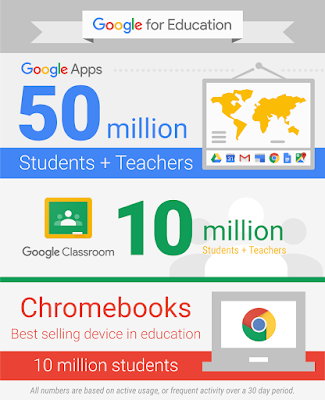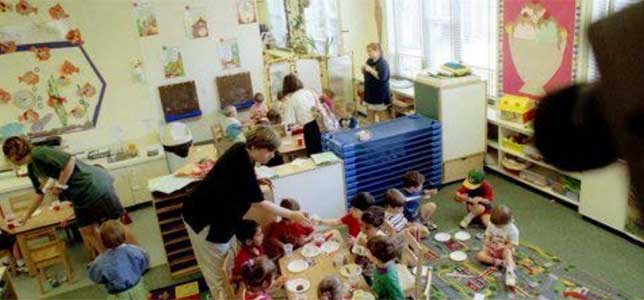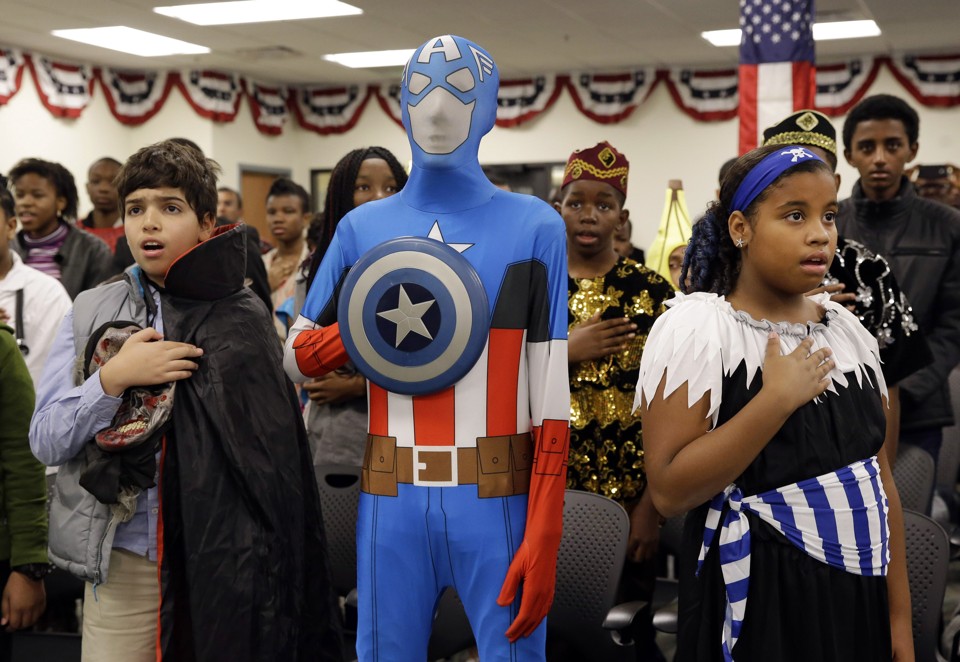Colleges and universities find new ways to work and learn with Google for Education
Posted by Michael de la Cruz, Google for Education team
Editor’s note: In this post, we’re sharing some of the great work that colleges and universities are doing with the help of Google for Education tools. To learn more about Google’s solutions for higher education, come visit us atEDUCAUSE – the largest higher education EdTech event in the US – October 27-30 in Indianapolis, at #1110 in the Expo Hall. We’ll be demoing the latest products with Googlers, administrators, professors and students givingshort presentations throughout the week. And if you can’t attend EDUCAUSE, be sure to join our webinar with University of Texas at Austin on November 17th at 2pm EST / 11am PST.
Many higher education campuses are home to tens of thousands of students, thousands more staff, and dozens of buildings and academic departments — not to mention online learners. How do you create community and enable collaboration in academic settings that are the size of small cities, while making it easy for everyone on campus to learn and work together? Millions of students, teachers and administrators at colleges and universities around the world use Google Apps for Education to access their coursework from anywhere, communicate at any time, and share ideas for academic projects. In fact, the majority of U.S. News & World Report’s top 100 universities use Google Apps. Here’s how several major universities have brought professors, students and departments closer together.
Bringing Google’s best solutions to campus
Introducing new technology tools often means adoption delays and integration headaches. At schools likeGeorgetown University (case study), where Google is already the top choice of many students and faculty for email and collaboration, using Google Apps for Education for official school business was a painless transition.
The high awareness of Google Apps, and its seamless integration with other systems, was also a deciding factor at North Carolina State University (case study). “For the students, many of whom were already using Google, it really was a no-brainer,” says Sarah Noell, an assistant director in the school’s Office of Information Technology.
Schoolwide solutions unify large campuses
At the very largest universities, like the University of Michigan (case study) which has 43,000 students, separate schools and departments often choose their own email and collaboration tools — which means there’s no consistent way to share documents or manage email across the vast university community. With Google for Education, Michigan was able to unify all of its 19 schools under one collaborative solution. “When Google Apps for Education was introduced, there was a huge sigh of relief,” says Jeff Ringenberg, a faculty member in the Electrical Engineering and Computer Science department. “Previously, it was very difficult for students and professors to keep their information synchronized.”
Professors and students work anytime, anywhere
Not only do schoolwide collaboration and productivity tools unify campuses, they make it easy to tap into course syllabi, reading lists and progress reports from professors. At Brown University (case study), moving from Microsoft Exchange to Google Apps meant students no longer needed to carry their laptops around – they were able to choose any device on campus or pull out their mobile phones and immediately be productive. “All you need is a web browser,” says Geoffrey Greene, Brown’s director of IT support. “It doesn’t matter if you’re on your PC at home or on your Chromebook at work; you can do anything from any machine, anywhere.”
The students running Brown Market Shares, a food distribution program, use Google Drive to share meeting agendas and customer check-in sheets. “Using a Google Doc for our weekly meeting agendas, is useful because we can each add items to it before the meeting at any time of the day or night,” says Meagan Miller, an undergraduate student and Brown Market Shares’ communications coordinator.
Security and privacy help research and learning flourish
With anytime, anywhere access, students and teachers need assurance that their projects can only be accessed by their chosen colleagues. Brown decided to adopt Google for Education in part because the university needed to protect in-progress research while encouraging collaboration from the campus community. The University of Texas at Austin made a similar choice: “What happens in the classroom should stay in the classroom,” says Christy Tran, a student intern working in CIO Brad Englert’s group. “Students can trust that they’ll have a safe learning experience.”
Better communication and feedback beyond the classroom
At UT Austin, home to 51,000 students, it’s not easy for professors to touch base with all of their students face-to-face. Google Apps lets feedback happen outside of class time or office hours. “I may only see students in class three hours a week, but we’re working together and editing classwork all the time, even on weekends,” says Angela Newell, a faculty member of UT Austin’s McCombs School of Business. “It allows us to move projects along much faster, and we can increase camaraderie with students.”
The University of Michigan’s Jeff Ringenberg collaborates with other teachers on his Electrical Engineering and Computer Science course syllabi and exams using Google Docs. “It eliminates the need to send thousands of versions back and forth,” he says. “We’ve streamlined the process of writing an exam, which frees me up to focus on communicating with students as opposed to generating content.”
There are many more stories about colleges and universities that are are re-thinking the ways they learn and work. If you’re in Indianapolis, we hope to see you in the EDUCAUSE Expo Hall at #1110. And if you can’t make it to the conference, be sure to join our webinar with University of Texas at Austin on November 17th at 2pm EST / 11am PST.
A new kind of Classroom for 10 million students and teachers
Posted by Cinthya Mohr, User Experience Lead, Google for Education
In a junior high class in Queens, New York, Ross Berman is teaching fractions. He wants to know whether his students are getting the key concept, so he posts a question in Google Classroom and instantly reviews their answers. It’s his favorite way to check for understanding before anyone has the chance to fall behind.
Across the country, in Bakersfield, California, Terri Parker Rodman is waiting at the dentist’s office. She wonders how her class is doing with their sub. With a few swipes on her phone, she finds out which students have finished their in-class assignment and sends a gentle reminder to those who haven’t.
Google Classroom launched last August, and now more than 10 million educators and students across the globe actively use it to teach and learn together, save time, and stay organized. We worked with teachers and students to create Classroom because they told us they needed a mission control – a central place for creating and tracking assignments, sharing ideas and resources, turning in completed work and exchanging feedback. Classroom is part of Google’s lineup of tools for education, which also includes the Google Apps for Education suite – now used by more than 50 million students, teachers and administrators around the world – and Chromebooks, the best-selling device in U.S. K-12 schools.
Here are a few of the stories we’ve heard from teachers and students who are using Classroom.
Learning better together
We built Classroom to help educators spend less time on paperwork and administrative tasks. But it’s also proven to be highly effective at bringing students and teachers closer together. In London, fifth grader Kamal Nsudoh-Parish stays connected with his Spanish teacher while he does his homework. “If I don’t understand something, I can ask him and he’d be able to answer rather than having to wait until my next Spanish lesson,” Kamal says.
Terri, who teaches sixth grade at Old River Elementary School, also observes that Classroom can strengthen ties and improve communication. “When a student doesn’t turn something in, I can see how close they are,” she says. “In the past, I couldn’t tell why they didn’t finish their work. I was grading them on bringing back a piece of paper instead of what their ability was.”
Resource room teacher Diane Basanese of Black River Middle School in Chester, New Jersey, says that Classroom lets her see her students’ minds at work. “I’m in the moment with them,” she explains. “We have dialogue, like, ‘Oh, are you saying I should use a transition?’ We’re talking to each other. It’s a better way.”
Removing the mundane
By helping them cut down on busywork, Classroom empowers teachers to do even more with every school day. “I no longer waste time figuring out paper jams at the school photocopier,” says Tom Mullaney, who teaches in Efland, North Carolina. “Absent students no longer email or ask, ‘What did we do yesterday?’ These time savers may not sound like much, but they free me to spend time on things that I consider transcendent in my teaching practice.”
In Mexico City, teachers at Tec de Monterrey high school and university switched to Classroom from an online learning management system that often added complexity to their workflow instead of simplifying it. Professor Vicente Cubells says he’s found the new question feature in Classroom particularly useful for short quizzes, because he can quickly assess learning and have an automatic record of their responses and grades. “The Classroom mobile apps have also become essential for our faculty and students, we use them to stay connected even when we’re not in front of a laptop,” Cubells said.
Giving teachers superpowers
Teachers are some of the most innovative thinkers in the world, so it’s no surprise that they’ve used Classroom in ways we never even imagined.
Elementary school teacher Christopher Conant of Boise, Idaho, says his students are usually eager to leave school behind during summer break. But after using Classroom last year, they wanted to keep their class open as a way to stay in touch. “Classroom is a tool that keeps kids connected and learning as a community, well beyond the school day, school year and school walls,” said Christopher, who continued to post videos and questions for his students all summer long.
These endless possibilities are the reason why Diane Basanese, a 30-year teaching veteran, says that Classroom is the tool she’s been looking for throughout her career. “It has made me hungrier,” she explains. “I look at how I can make every lesson a hit-it-out-of-the-ballpark lesson.”
Growing our Classroom
Ever since we began working with teachers and students, it’s been rewarding and encouraging to hear their stories, collaborate to find answers to their problems, and watch those solutions come to life at schools and universities around the world. Lucky for us, we’re just getting started.


















Consider the implications to students in small group testing. This is powerful information.